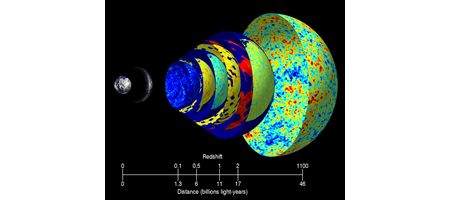Dark energy is real, say scientists who claim they’ve validated the disputed 2003 research that was seen as the first clear evidence for its existence.

The astronomers, from the University of Portsmouth and LMU University Munich, say there’s a 99.996 percent chance that the strange substance thought to be speeding up the expansion of the universe is really there.
“Dark energy is one of the great scientific mysteries of our time, so it isn’t surprising that so many researchers question its existence,” says Professor Bob Nichol, a member of the Portsmouth team.
“But with our new work we’re more confident than ever that this exotic component of the universe is real – even if we still have no idea what it consists of.”
Over ten years ago, astronomers observing the brightness of distant supernovae realised that the expansion of the universe appeared to be accelerating. The phenomenon was attributed to the repulsive force associated with dark energy, now thought to make up about three-quarters of the cosmos.
But while the researchers who made the discovery received the Nobel Prize for Physics in 2011, the existence of dark energy remained in dispute.
The strongest evidence came in the form of the Integrated Sachs Wolfe effect. In 1967, Rainer Sachs and Arthur Wolfe predicted that light from the Cosmic Microwave Background – the radiation of the residual heat of the Big Bang – would become slightly bluer as it passed through the gravitational fields of matter, an effect known as gravitational redshift.
This effect was first detected in 2003 – and was immediately seen as corroborative evidence for dark energy. But the data is weak, and some scientists suggested it was caused by other sources, such as the dust in our galaxy.
In their new paper, though, the team has re-examined all the arguments against the Integrated Sachs Wolfe detection, as well as improving the cosmic maps used in the original work.
They conclude that there’s a 99.996 per cent chance that dark energy is responsible for the hotter parts of the cosmic microwave background maps – about the same level of significance as the recent discovery of the Higgs boson.
“This work also tells us about possible modifications to Einstein’s theory of General Relativity,” says lead author Tommaso Giannantonio.
“The next generation of cosmic microwave background and galaxy surveys should provide the definitive measurement, either confirming general relativity, including dark energy, or even more intriguingly, demanding a completely new understanding of how gravity works.”






